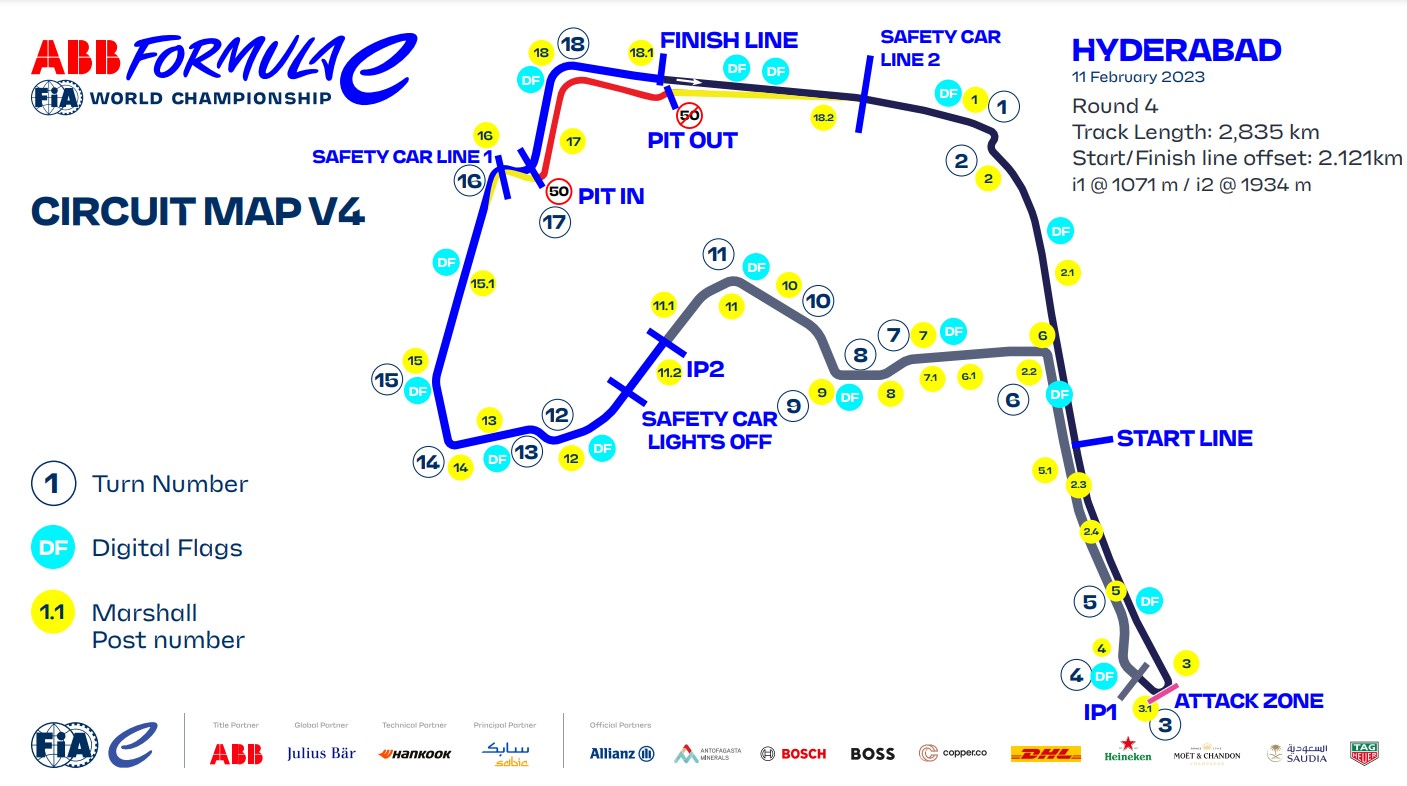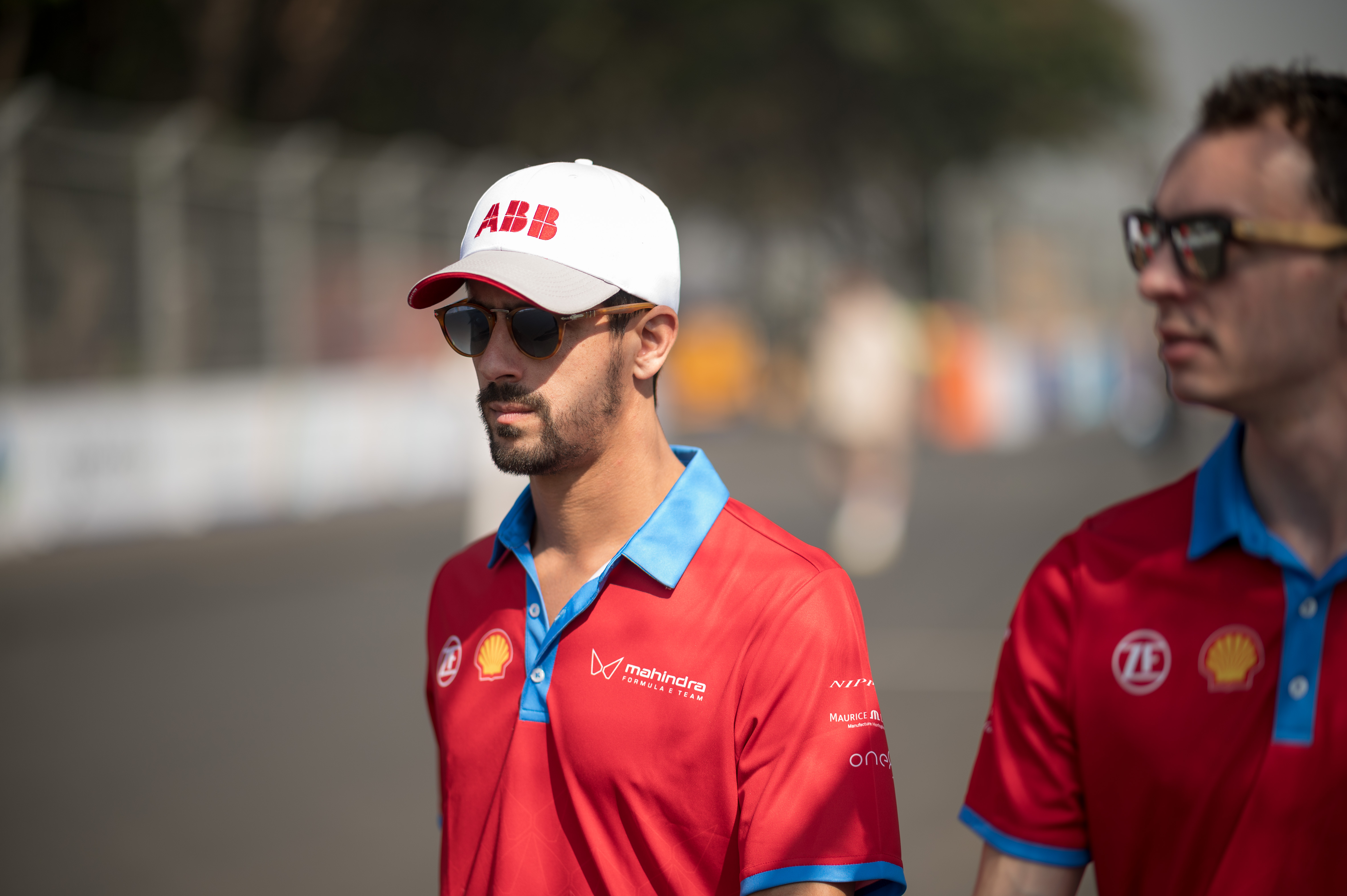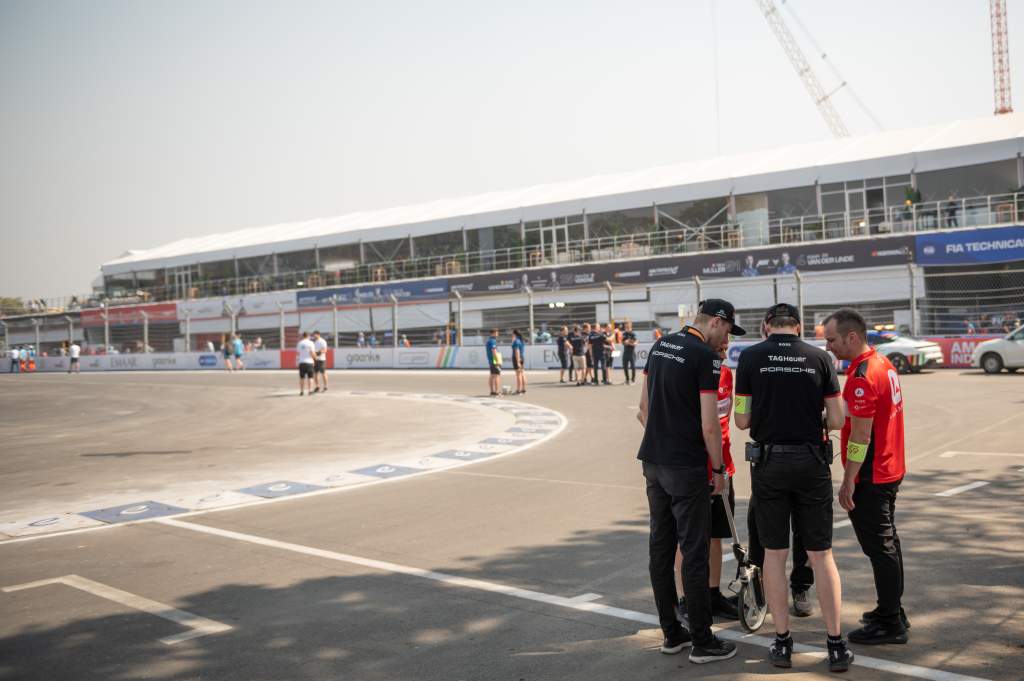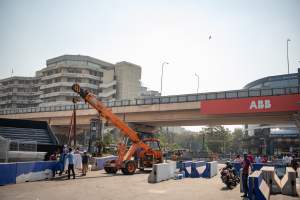Track limits seldom matter on street circuits but at Formula E’s inaugural Hyderabad E-Prix tomorrow they could become one of the flashpoints.
A new high-speed chicane has been inserted between what was supposed to be the first two turns of the circuit in an effort to enhance the regenerative energy aspect of races and to slow down the approach to the tight hairpin that is now Turn 3.
But plans to install entry and exit kerbs at the chicanes have been ditched due to time constraints in getting the track readied for use.
Instead, painted kerbs will be used, instead meaning that essentially the wall on entry will be the apex for the first right into the complex.
An “escape road” has also been installed in the T12/13 chicane, which is believed to be similar to the entry of the one used in the stadium section at last August’s Seoul E-Prix.
A slight modification has also been made to the pitlane entry whereby it has been tightened with an extra concrete track market block.
Track limits are set to be policed via cameras at the T1/2, T12/13, and T16/17 complexes to monitor bypassing of the chicanes.
Practice and qualifying laptimes will be deleted if drivers are proven to have gained a time advantage, while in the race drivers will be given the option to give back position gained via their own imitative rather than by a specific decree from the race director, Scot Elkins.

Talking to The Race about the implementation of the first chicane, Mahindra’s Lucas di Grassi said that he thought there were several options that could have been looked at regarding the first chicane in particular.
“It’s very difficult to judge what is the right thing to do,” said di Grassi.
“You could do it slower, you could do without it, I think it wouldn’t make a big difference.
“My view is that they chose a halfway solution. They didn’t want to make it too slow. But they put a chicane in. If it would be my choice, I would make just a corner like Mexico, a kink or even completely flat.
“But then going completely flat it is a bit of an issue because you arrive in the hairpin with 350kW. if you do the corner one flat, you will reach very, very high speeds to the end and then I don’t think the runoff is enough to reach those speeds.
“So, you will have to find a way to slow down. But I still think it’s better to do it like a 90-degree corner.
“The way they did it, I don’t think it’s dangerous. I think it will be difficult to police sometimes, but not dangerous.”

Di Grassi’s rival Mitch Evans made the point that the chicane has similarities to the fast ‘pif-paf’ chicane that was used at Punta del Este in 2018. On that occasion several drivers clipped a bollard on entry and damaged their cars.
Evans also pointed out that generally drivers are taking a much more in-depth look at circuit safety this season in light of the Gen3 cars having increased straightline speed.
“Compared to other years we’re definitely more aware of it,” said Evans.
“And obviously this race would have to make sure that there were no corners cut. It’s mainly because we’re travelling faster, and the tracks are, let’s say, very similar to what we’ve had in the past.
“The chicane looks very quick and it’s a bit of an unusual look, a bit of a Punta chicane, which seems a little bit unusual to adopt that back again.
“But then obviously we were going to probably see our top speed for the year into T3 here and it’s basically a hairpin so it’s a massive stop.”
McLaren’s Jake Hughes confirmed that di Grassi, along with Oliver Rowland and Antonio Felix da Costa, had gauged the opinions of other drivers in their positions as advisers to the FIA on track construction.
“We do get to have a say, we’re always asked in drivers’ briefings and to be honest, even before we’re asked we’re always talking about it anyway,” Hughes told The Race.
“I think guys like Oli, Lucas and Antonio sort of take what the drivers think and feel and put it to their FIA and Formula E and I think those guys are always in discussion about it.
“As an example, we have the first chicane here at T1/T2 and we drove it on the DiL [driver-in-loop] simulator.
“As drivers we were questioning whether that was going to be realistic, what we had in the track model.
“We were back and forth in discussion with the FIA and FEO as to what we would face when we got here. So that sort of communication line is open and it’s important that it stays like that.”





